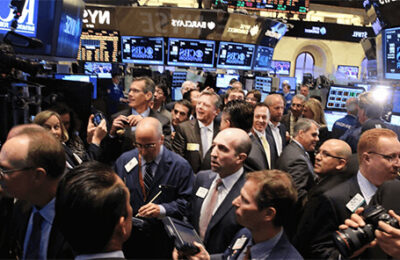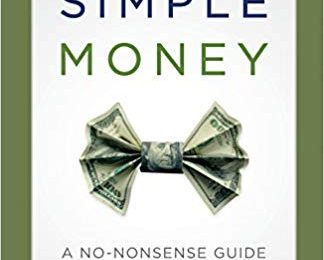Contents
Patterns help us recognize possible upcoming movements so that we can create trading plans to catch moves that fit our strategies. The handle isn’t as pronounced as the first two, but it’s there. Here’s an example of a cup and handle in a longer time frame. NGTF started the pattern at the end of November 2018 and went into February of 2019.

Imagine having a reliable strategy that tells you exactly which direction to follow every time the pattern develops. IG International Limited is licensed to conduct investment business and digital asset business by the Bermuda Monetary Authority. Discover the range of markets and learn how they work — with IG Academy’s online course. Place a stop-loss below the most recent low in the handle pattern. The more «U» shaped the cup bottom is, the stronger the signal.
Most of the handle should be above the 50-day moving average. Moving average confirmation – The 50-day moving average should be above the 200-day moving average, and both moving averages should be trending higher. The idea behind the Cup and Handle pattern is to trade the breakout when the price breaks above the “handle”. The good thing with a buy stop order is your entry will just be above the highs of the “handle”, and if the breakout is real, that’s one of the best prices to get in.
Ideally, a handle should form no more than 15% below the left high of the cup and should slope downwards, not upwards. To identify the cup and handle pattern, start by following the price movements on a chart. The pattern starts to form when there is a sharp downward price movement over a short time. This is followed by a period where the price remains relatively stable. Then, there is a rally that is more or less equal to the initial decline.
When looked at closely, it looks like a cup with a handle. The handle can be a small consolidation or slight pullback. The chart below shows how a cup and handle pattern look like. The price target following the breakout can be estimated by measuring the distance from the right top of the cup to the bottom of the cup and adding that number to the buy point.
Please follow Saito-Chung on Twitter at both @SaitoChung and @IBD_DChung for more on growth https://forexarticles.net/s, charts, breakouts, sell signals, and financial markets. Traditionally, the cup has a pause, or stabilizing period, at the bottom of the cup, where the price moves sideways or forms a rounded bottom. It shows the price found a support level and couldn’t drop below it.
https://bigbostrade.com/ important to note that even O’Neil says the pattern isn’t an exact science. Sometimes the initial drop from the top of the cup can go as deep as 75% … And sometimes the cups don’t even have a handle. In most cases, the decline from the high to the low of the handle shouldn’t exceed 8%–12%. If it does, it shouldn’t exceed the previous drop within the cup. The “handle” can only convert to a breakout when there is strong volume. We tested 700+ combinations of trend, signal, and lookback period to deliver to you a comprehensive RSI signal database.
How to Find Undervalued Stocks
The cup and handle pattern and the inverted type are continuation patterns. Under normal conditions, they are not expected to signal trend reversals, but nothing is perfect in the market. There can be situations where, after the formation of the handle, the price breaks below the support level formed by the bottom of the cup, invalidating the pattern.
Following the cup is the handle, a flat region in this example that stretches from March and into April. Price jumps upward for several weeks and creates another inverted cup before starting a new trend downward. The first example shows a shallow cup and handle pattern developing over the course of approximately two to three months. The cup features a gentle pullback after a strong bullish movement and the right side of the cup reaches the same price level as the left side of the cup. The false breakout in the handle on August 13 occurs on low trading volume, demonstrating the importance of using trading volume as a method of confirming the breakout.
Financial Markets
If the https://forex-world.net/ drops below the lower half of the cup, it is no longer a ‘cup and handle’ pattern. In most cases, the handle should not dip below the top third of the cup for it to be a cup and handle pattern. The cup and handle forms as an intermediate/secondary cycle correction before the primary cycle resumes its up-trend. The cup and handle pattern is a common method you can use to analyse the trend of assets. You can use it to analyse stocks, currencies, bonds, commodities, and index funds among others. It then finds some support and moves upwards again and finds resistance around the 50% retracement.

In addition,StocksToTrade accepts no liability whatsoever for any direct or consequential loss arising from any useof this information. The best place to enter a trade using this pattern is when the handle forms. If the pattern is successful, there’s a good chance for another breakout after the stock passes the cup’s previous high. Less of a price drop from the high is a signal of strength and shows more potential of an upcoming uptrend. If it doesn’t, the stock’s momentum may not be enough to break through the higher resistance level.
The above numbers are based on 556 perfect trades in a bull market. Plus, we’ll alert you in real-time when the stock is breaking out or breaking down so you can go long or short. We provide you with tools to do your due diligence using comprehensive technical analysis, fundamental analysis and industry analysis. Here’s how you can scan for the best undervalued stocks every day with Scanz.
How to Trade the Inverse Cup and Handle
This resistance happens at the level where the price reached and started falling. The cup and handle pattern is part of the so-called continuation patterns. Other such patterns are the ascending and descending triangle pattern and bullish and bearish flags and pennants. A version of this column was first published in the July 9, 2010, edition of IBD.
- Sign up for Market Minutes to receive powerful market analysis, top trade ideas, & helpful blog updates.
- Below are visual examples of failed cup and handle chart patterns on the price charts of various markets.
- Traders have come to know the cup and handle as a bullish continuation pattern that is a highly accurate predictor of sizable breakouts.
- Use the smaller height and add it to the breakout point for a conservative target.
- The breakout should occur on high trading volume and continue above the trendline drawn from the left to the right side of the cup to provide confirmation.
Upside breakouts often lead to small 2-3% rallies followed by an immediate test of the breakout level. If the stock closes below this level for any reason the pattern becomes invalid. It’s important to close your short position quickly, as you know the «handle» will form soon. The price tends to rebound when it hits the support trendline.
That’s to say, you can use volume as a way to confirm a breakout. But you have to make sure that you’ll always place a stop-loss to reduce risks and protect your account. It usually occurs when the market reaches a top or bottom and begins to lose momentum.
Yes, traders can use a failed cup and handle pattern as a bearish signal to enter into a short trade. William O’Neil’s CANSLIM method shows better performance than the overall market (S&P 500) in backtests, even though it has lagged in recent years. Although we might argue O’Neil is the innovator of the cup and handle strategy, it’s just one part of many in his methodology. We can’t conclude on the profitability of the cup and handle strategy based on the CANSLIM method.
Is The Cup and Handle A Bullish Pattern?
Finally, one limitation shared across many technical patterns is that it can be unreliable in illiquid stocks. A cup and handle is a technical chart pattern that resembles a cup and handle where the cup is in the shape of a «u» and the handle has a slight downward drift. While investors can manually observe stock charts to identify cup and handle patterns, there are also brokerage and software systems available that can scan for the pattern. Cup and handle patterns are easily identified on a chart because of their unique appearance. A cup with handle pattern is a continuation pattern that gets its name from the visual pattern it makes on the chart. The cup is a curved u-shape or rounded bottom, while the handle slopes slightly downwards.
The cup and handle pattern is a formation on the price chart of an asset that resembles a cup with a handle. As its name implies, the pattern consists of two parts — the cup and the handle. Further down in the article we have several charts to show how it looks like in a chart.





